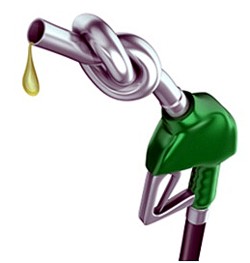DOE Brings Online 2013 Fuel Economy Guide Providing Millage Data Across Vehicle Models
 February 5, 2013
February 5, 2013  Kyriaki (Sandy) Venetis
Kyriaki (Sandy) Venetis The 2013 Fuel Economy Guide has come online as a collaborative consumer information effort developed between the U.S. Environmental Protection Agency and the U.S. Department of Energy.
 Graphic courtesy of blog.theautopartsshop.com.
Graphic courtesy of blog.theautopartsshop.com.
The guide is a user-friendly website designed for both shoppers and owners to find information about a multitude of vehicles across models and technologies, including best and worst gas millage, maintenance tips, and tax credits on hybrids, electrics, alternative fuel vehicles, and diesel vehicles.
The platform has multiple menus on fuel efficiency, including the successive list of the 2013 Most Fuel Efficient Cars by EPA Size Class (including electric vehicles) & the 2013 Least Fuel Efficient Cars.
On the top of the Most Fuel Efficient list is the 2013 smart fortwo electric drive convertible, Automatic (A1), with a 122 MPGe city, a 93 MPGe highway, and a 107 MPGe combined, with a $0.96 cost to drive 25 miles.
The electric vehicles are measured in MPGe with 33.7 kW-hrs = 1 gallon of gasoline.
For the Least Fuel Efficient, the 2013 Bugatti Veyron, 8.0 L, 16 cyl, Automatic (AM-S7), received top honors. The Veyron performed at a 8 mpg city, a 15 mpg highway, and a 10 mpg combined, with a $9.18 cost to drive 25 miles.
Another noteworthy list on the site is the Top Ten EPA-Rated Fuel Sippers (2013), which includes electric vehicles and plug-in hybrid electric vehicles. The vehicles are ranked by their combined rating (weighted by 55 percent and 45 percent highway).
Receiving the top rating on the Top Ten Fuel Sipper list is the 2013 Scion iQ EV (Automatic) with a 138 MPGe city, a 105 MPGe, and a 121 MPGe combined.
Besides the best and worst in fuel economy another great aspect of the web platform is the Top Ten Misconceptions About Fuel Economy, with the top misconception being that, “You have to drive a small car to get good fuel economy.”
The DOE finds that, “Advanced technologies like hybrid drivetrains, diesel engines, direct fuel injection, turbocharging, advanced transmissions, low rolling resistance, tires, and aerodynamic designs are allowing standard-sized vehicles to be very fuel efficient.
“For the 2013 model year, about half of the top ten most efficient vehicles are midsized or large cars and wagons.”
 diesel,
diesel,  electric,
electric,  fuel cell/hydrogen,
fuel cell/hydrogen,  hybrids | tagged
hybrids | tagged  2013 DOE Fuel Economy Guide,
2013 DOE Fuel Economy Guide,  2013 Least Fuel Efficient Cars,
2013 Least Fuel Efficient Cars,  2013 Most Fuel Efficient Cars by EPA Size Class,
2013 Most Fuel Efficient Cars by EPA Size Class,  Federal Tax Credits For Alternative Fuel Vehicles,
Federal Tax Credits For Alternative Fuel Vehicles,  Federal Tax Credits For Diesels,
Federal Tax Credits For Diesels,  Federal Tax Credits For Electric Vehicles,
Federal Tax Credits For Electric Vehicles,  Federal Tax Credits For Hybrids,
Federal Tax Credits For Hybrids,  Federal Tax Credits For Plug-In Hybrids,
Federal Tax Credits For Plug-In Hybrids,  Top Ten EPA-Rated Fuel Sippers (2013),
Top Ten EPA-Rated Fuel Sippers (2013),  Top Ten Misconceptions About Fuel Economy
Top Ten Misconceptions About Fuel Economy 